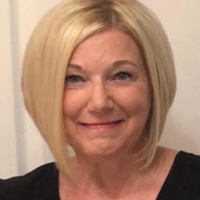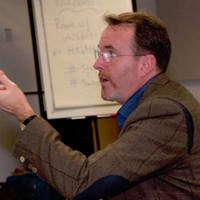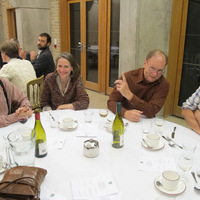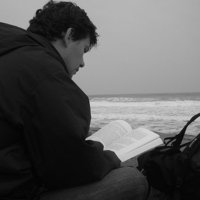
Sandra Gaskell
Dissertation: Geospatial record of the diagnostic categories with a comparison to quantity of patient numbers within the poor air quality districts in Central Valley California.
Biography:
Holding indigenous ancestry from Southern New Jersey, both sides of her family are indigenous to the marshlands and oyster fields of Turkey Point and the Delaware Bay. At a young age her father moved the family to California near Yosemite. Current research interests are in a post doctoral study in Art Therapy Counseling combining neuroscience and visual arts in rehabilitation therapeutics continuing to acquire license as a PPS School Psychologist . For the past fifteen years she has been working to map the Sacred Sites and dialects of the people indigenous to the family use routes of Yosemite. These routes are bounded by the San Joaquin River and the Sierra Nevada range. She is an educational and medical speech pathologist, a tribal archaeologist, and implements mapping family resources, traditional spiritual activities, and history. While attending Northern Arizona University she participated in the Assistant Attorney General’s office establishment of Tribal mapping resources for the State of Arizona. She comes from the field of cultural/medical anthropology into speech pathology by way of indigenous language learning. Sandra continues to work as a Registered Professional Archaeologist in the Tribal setting in the Sierra Nevada and Central Valley. She completed her SLP.D in research related to recovery and symptom reduction and the effects of air pollution on vocal function. She works in the educational setting, she was a member and Co-Chair of the CSHA Diversity Committee, and was the speech pathologist at a 2-way-immersion school. Through working in the tribal communities, she participates in recording alternative treatments in Indian Health with Tribal Elders for heritage preservation; and committed to access to education for these communities.
Supervisors: Dr. A. Toth and Dr. E. Roberts
Biography:
Holding indigenous ancestry from Southern New Jersey, both sides of her family are indigenous to the marshlands and oyster fields of Turkey Point and the Delaware Bay. At a young age her father moved the family to California near Yosemite. Current research interests are in a post doctoral study in Art Therapy Counseling combining neuroscience and visual arts in rehabilitation therapeutics continuing to acquire license as a PPS School Psychologist . For the past fifteen years she has been working to map the Sacred Sites and dialects of the people indigenous to the family use routes of Yosemite. These routes are bounded by the San Joaquin River and the Sierra Nevada range. She is an educational and medical speech pathologist, a tribal archaeologist, and implements mapping family resources, traditional spiritual activities, and history. While attending Northern Arizona University she participated in the Assistant Attorney General’s office establishment of Tribal mapping resources for the State of Arizona. She comes from the field of cultural/medical anthropology into speech pathology by way of indigenous language learning. Sandra continues to work as a Registered Professional Archaeologist in the Tribal setting in the Sierra Nevada and Central Valley. She completed her SLP.D in research related to recovery and symptom reduction and the effects of air pollution on vocal function. She works in the educational setting, she was a member and Co-Chair of the CSHA Diversity Committee, and was the speech pathologist at a 2-way-immersion school. Through working in the tribal communities, she participates in recording alternative treatments in Indian Health with Tribal Elders for heritage preservation; and committed to access to education for these communities.
Supervisors: Dr. A. Toth and Dr. E. Roberts
less
Related Authors
Daniel D. Hutto
University of Wollongong
Sue Grimmond
University of Reading
David Small
Lehigh University
Tara Smith
Kent State University
Ahmar Mahboob
The University of Sydney
James Costa
Université Paris 3 Sorbonne Nouvelle
Prof. Dr. Moustafa Moharam
Sohag University
Joaquim Llisterri
Universitat Autònoma de Barcelona
Stephen Silliman
University of Massachusetts, Boston
Alexander More
Harvard University
InterestsView All (79)










Uploads
Papers by Sandra Gaskell
This report describes the lives and locations of the dominant governing culture of the Southern Sierra Miwuk Nation (SSMN) during the transformational historic period after the Spanish occupation and into the military movements at the onset of the California gold rush. It includes a brief biography of each of the captains before the turn of the nineteenth century, a detailed description of how the origination of this history began, and efforts to simplify the family use routes and village occupancy based on the explanation of Whitney (1871) by describing the "tracts" of each band. The descriptions of each band will include an explanation of how the populations became consolidated due to environment and circumstances out of their control, and examples of past and current cooperative projects at locations of historic importance with persons of historic significant status. The 1978 chapter written by Richard Levy and referenced within the 2018 OFA Proposed Findings (PF) will be addressed to correct the map perception which is counter to the band's understanding of their own territory. There will be a listing of the 7.5 quadrangle maps that represent the full region of all of the bands, and the nomenclature of the Indigenous names for the regional occupation sites over the entire landscape. Based on the diaries of the Mariposa Indian War, the camps and military movements will be used to identify how the captains moved throughout the war. Additionally, seven land allotments claimed and assigned to particular families of the captains of the bands of the SSMN around the turn of the century will be described and shown to be part of the ancient civilization places and trail systems. Finally, a chapter will be dedicated to placing the captains into their regional settlements with a geographic landmark description for the tracts of each band. The regional geographic names of the Six Bands of the SSMN were traced to the captains of the contact period and the Treaty signers. Ceremonial settlements of Captains following the specific geographic areas hold key information for defining leadership and family relationships in these six bands: 1) Potoyunte, 2) Awalache, 3) Ahwahneechee (Yo-ke-mi-te), 4) Siyante, 5) Chauchilla, and 6) Nutchu.
Early records of indigenous occupation of the Half Way Creek (later named Dividing Creek) and Vacant Marsh of West Jersey before 1698 has been recorded in records of various faith groups colonizing the lands between the Cohansey Creek and the Maurice River. The area depicted on the map by John Worlidge in 1702 where landmarks were drawn between the Prince Maurice River and the Cohanʃe were wildlands and marshlands where the King, Newcomb, Gaskill, and Blizzard lineages originated. These labeled wildlands on the early maps from explorations contain some habitation areas, and reported encounters with the original people of our early plantation (church planting) by immigrants. Cartography delineates the Kahanʃick Indians, Agreement Creek, Egg Island, Gamen Island, vacant marsh, Half Way Creek, and James Waʃs to the west of the Maurice River. Through compiling the history of various denominations of church planting, the early encounters, the oral history, the cemetery listings, the archaeological site records, and indigenous knowledge of flora and fauna, a robust recreation for the territory of the Lenopi has been recorded into a searchable collection on geographic information system mapping of Southern New Jersey.
ABSTRACT
This report describes the lives and locations of the dominant governing culture of the Southern Sierra Miwuk Nation (SSMN) during the transformational historic period after the Spanish occupation and into the military movements at the onset of the California gold rush. It includes a brief biography of each of the captains before the turn of the nineteenth century, a detailed description of how the origination of this history began, and efforts to simplify the family use routes and village occupancy based on the explanation of Whitney (1871) by describing the "tracts" of each band. The descriptions of each band will include an explanation of how the populations became consolidated due to environment and circumstances out of their control, and examples of past and current cooperative projects at locations of historic importance with persons of historic significant status. The 1978 chapter written by Richard Levy and referenced within the 2018 OFA Proposed Findings (PF) will be addressed to correct the map perception which is counter to the band's understanding of their own territory. There will be a listing of the 7.5 quadrangle maps that represent the full region of all of the bands, and the nomenclature of the Indigenous names for the regional occupation sites over the entire landscape. Based on the diaries of the Mariposa Indian War, the camps and military movements will be used to identify how the captains moved throughout the war. Additionally, seven land allotments claimed and assigned to particular families of the captains of the bands of the SSMN around the turn of the century will be described and shown to be part of the ancient civilization places and trail systems. Finally, a chapter will be dedicated to placing the captains into their regional settlements with a geographic landmark description for the tracts of each band. The regional geographic names of the Six Bands of the SSMN were traced to the captains of the contact period and the Treaty signers. Ceremonial settlements of Captains following the specific geographic areas hold key information for defining leadership and family relationships in these six bands: 1) Potoyunte, 2) Awalache, 3) Ahwahneechee (Yo-ke-mi-te), 4) Siyante, 5) Chauchilla, and 6) Nutchu.
During early suppression efforts of two wildland fires, indigenous firefighters reduced damage by sharing unrecorded cultural site polygons created from oral tradition aligned to dozer lines ahead of the fire’s predictive path. During the Detwiler Fire (2017), and the Ferguson Fire (2018), the Registered Professional Tribal Archaeologists from two tribes, and the Cultural Officers from the Seven Affiliated Tribes of Yosemite participated at Incident Command during suppression efforts by guiding fire lines which would avoid unrecorded roundhouse depressions, milling features, and burial locations. Confidentiality of the information was protected through the use of controlled distribution of data to only the field READ /REAF for the sites being protected on that day in advance of the dozer crews. Tribal Archaeologists compare resource maps (historic, prehistoric, flora and fauna) to see which resources overlap tribal sacred sites not yet discovered by non-indigenous. When the repair process begins, tribal monitors and archaeologists participate in the mitigation measures revealing less damage to sites than in previous fires. GIS collector Apps used by field archaeologists can hold an abstract polygon for the areas of to protect which the tribes request to remain unrecorded by a site survey record form.
Wherever humans are working there needs to be guidance for effective communication. The audience is a class of art therapy counseling students at George Washington University in D.C. with Juliet King ATR professional art therapist working with neurologists on treatment planning. This lecture focuses on the timelessness of material arts relating to comprehensive assessment using interdisciplinary collaborative approach comparing the IDEA 13 diagnostic categories in education, the DSM V diagnostic codes used by speech pathologists and psychologists, and the formative art therapy assessments supporting the diagnostic efforts. The ancient art of material culture and the process of community participation in making items of functional use hold some similarity to the way we as therapists weave the materials of art into healing communication arts. An Art Therapy Assessment is part of the information needed to design goals and therapy planning. It has been said that “therapists must try their best to ensure that clients have the mental, emotional, and physical capacities to function on a new level, or the change can be frustrating rather than rewarding” (Hinz, 2009, p. 229). The ICD10 codes which align with the DSM V diagnoses and CPT codes guide the treatment plan with definite projected points of progress whether we have approval for 4 weeks or 12 weeks. Our goals must be clear and easily measured.
This report describes the lives and locations of the dominant governing culture of the Southern Sierra Miwuk Nation (SSMN) during the transformational historic period after the Spanish occupation and into the military movements at the onset of the California gold rush. It includes a brief biography of each of the captains before the turn of the nineteenth century, a detailed description of how the origination of this history began, and efforts to simplify the family use routes and village occupancy based on the explanation of Whitney (1871) by describing the "tracts" of each band. The descriptions of each band will include an explanation of how the populations became consolidated due to environment and circumstances out of their control, and examples of past and current cooperative projects at locations of historic importance with persons of historic significant status. The 1978 chapter written by Richard Levy and referenced within the 2018 OFA Proposed Findings (PF) will be addressed to correct the map perception which is counter to the band's understanding of their own territory. There will be a listing of the 7.5 quadrangle maps that represent the full region of all of the bands, and the nomenclature of the Indigenous names for the regional occupation sites over the entire landscape. Based on the diaries of the Mariposa Indian War, the camps and military movements will be used to identify how the captains moved throughout the war. Additionally, seven land allotments claimed and assigned to particular families of the captains of the bands of the SSMN around the turn of the century will be described and shown to be part of the ancient civilization places and trail systems. Finally, a chapter will be dedicated to placing the captains into their regional settlements with a geographic landmark description for the tracts of each band. The regional geographic names of the Six Bands of the SSMN were traced to the captains of the contact period and the Treaty signers. Ceremonial settlements of Captains following the specific geographic areas hold key information for defining leadership and family relationships in these six bands: 1) Potoyunte, 2) Awalache, 3) Ahwahneechee (Yo-ke-mi-te), 4) Siyante, 5) Chauchilla, and 6) Nutchu.
Early records of indigenous occupation of the Half Way Creek (later named Dividing Creek) and Vacant Marsh of West Jersey before 1698 has been recorded in records of various faith groups colonizing the lands between the Cohansey Creek and the Maurice River. The area depicted on the map by John Worlidge in 1702 where landmarks were drawn between the Prince Maurice River and the Cohanʃe were wildlands and marshlands where the King, Newcomb, Gaskill, and Blizzard lineages originated. These labeled wildlands on the early maps from explorations contain some habitation areas, and reported encounters with the original people of our early plantation (church planting) by immigrants. Cartography delineates the Kahanʃick Indians, Agreement Creek, Egg Island, Gamen Island, vacant marsh, Half Way Creek, and James Waʃs to the west of the Maurice River. Through compiling the history of various denominations of church planting, the early encounters, the oral history, the cemetery listings, the archaeological site records, and indigenous knowledge of flora and fauna, a robust recreation for the territory of the Lenopi has been recorded into a searchable collection on geographic information system mapping of Southern New Jersey.
ABSTRACT
This report describes the lives and locations of the dominant governing culture of the Southern Sierra Miwuk Nation (SSMN) during the transformational historic period after the Spanish occupation and into the military movements at the onset of the California gold rush. It includes a brief biography of each of the captains before the turn of the nineteenth century, a detailed description of how the origination of this history began, and efforts to simplify the family use routes and village occupancy based on the explanation of Whitney (1871) by describing the "tracts" of each band. The descriptions of each band will include an explanation of how the populations became consolidated due to environment and circumstances out of their control, and examples of past and current cooperative projects at locations of historic importance with persons of historic significant status. The 1978 chapter written by Richard Levy and referenced within the 2018 OFA Proposed Findings (PF) will be addressed to correct the map perception which is counter to the band's understanding of their own territory. There will be a listing of the 7.5 quadrangle maps that represent the full region of all of the bands, and the nomenclature of the Indigenous names for the regional occupation sites over the entire landscape. Based on the diaries of the Mariposa Indian War, the camps and military movements will be used to identify how the captains moved throughout the war. Additionally, seven land allotments claimed and assigned to particular families of the captains of the bands of the SSMN around the turn of the century will be described and shown to be part of the ancient civilization places and trail systems. Finally, a chapter will be dedicated to placing the captains into their regional settlements with a geographic landmark description for the tracts of each band. The regional geographic names of the Six Bands of the SSMN were traced to the captains of the contact period and the Treaty signers. Ceremonial settlements of Captains following the specific geographic areas hold key information for defining leadership and family relationships in these six bands: 1) Potoyunte, 2) Awalache, 3) Ahwahneechee (Yo-ke-mi-te), 4) Siyante, 5) Chauchilla, and 6) Nutchu.
During early suppression efforts of two wildland fires, indigenous firefighters reduced damage by sharing unrecorded cultural site polygons created from oral tradition aligned to dozer lines ahead of the fire’s predictive path. During the Detwiler Fire (2017), and the Ferguson Fire (2018), the Registered Professional Tribal Archaeologists from two tribes, and the Cultural Officers from the Seven Affiliated Tribes of Yosemite participated at Incident Command during suppression efforts by guiding fire lines which would avoid unrecorded roundhouse depressions, milling features, and burial locations. Confidentiality of the information was protected through the use of controlled distribution of data to only the field READ /REAF for the sites being protected on that day in advance of the dozer crews. Tribal Archaeologists compare resource maps (historic, prehistoric, flora and fauna) to see which resources overlap tribal sacred sites not yet discovered by non-indigenous. When the repair process begins, tribal monitors and archaeologists participate in the mitigation measures revealing less damage to sites than in previous fires. GIS collector Apps used by field archaeologists can hold an abstract polygon for the areas of to protect which the tribes request to remain unrecorded by a site survey record form.
Wherever humans are working there needs to be guidance for effective communication. The audience is a class of art therapy counseling students at George Washington University in D.C. with Juliet King ATR professional art therapist working with neurologists on treatment planning. This lecture focuses on the timelessness of material arts relating to comprehensive assessment using interdisciplinary collaborative approach comparing the IDEA 13 diagnostic categories in education, the DSM V diagnostic codes used by speech pathologists and psychologists, and the formative art therapy assessments supporting the diagnostic efforts. The ancient art of material culture and the process of community participation in making items of functional use hold some similarity to the way we as therapists weave the materials of art into healing communication arts. An Art Therapy Assessment is part of the information needed to design goals and therapy planning. It has been said that “therapists must try their best to ensure that clients have the mental, emotional, and physical capacities to function on a new level, or the change can be frustrating rather than rewarding” (Hinz, 2009, p. 229). The ICD10 codes which align with the DSM V diagnoses and CPT codes guide the treatment plan with definite projected points of progress whether we have approval for 4 weeks or 12 weeks. Our goals must be clear and easily measured.
Before beginning a practice in any cultural group, there needs to be time for learning the belief structure and interpersonal expectations of that group. Before any assessment results or counseling will be accepted by an individual from the culture there needs to be a level of respect for the clinical perspective of the clinician.
18 Superintendents 47 years of Consultation: Wahhoga, Yosemite
Abstract
In 1969 the last home was razed in Wahhoga Village, Yosemite. Constant negotiation for their indigenous homes with 18 Superintendents over 47 years [27 Superintendents since moving to New Indian Village 1925], occurred before the term "consultation" was coined. Families fought for the right to return to their homes. After the 2008 EIR archaeology, and design funded by Yosemite Conservancy, the past before 1850 was investigated with the terminus of habitation of the original people to be seen now through the voices of the Elders whose consultation continues to work when things look their darkest.
Society of California Archaeology Conference March 11, 2017
Tenaya Lodge, Fish Camp CA near Yosemite
Intake Interviews in an emergency situation have a primary focus on the injury but a secondary focus is on the patient safety and mental health. Trauma-informed Screening using "Oral Myofunctional Considerations of Reoccurring Injuries Among Domestic Violence & Slavery Victims" is a protocol to improve the identification in the ER and removes more barriers to the identification and offer of safety to victims experiencing the Polyvagal sequence of immobilization. This study looks at the most recent reviews of the instruments used in the ER and their effectiveness. Suggestions are made for removing barriers to reporting, and in the future the types of therapies will be expanded since this paper only reviews one form of therapeutic intervention.